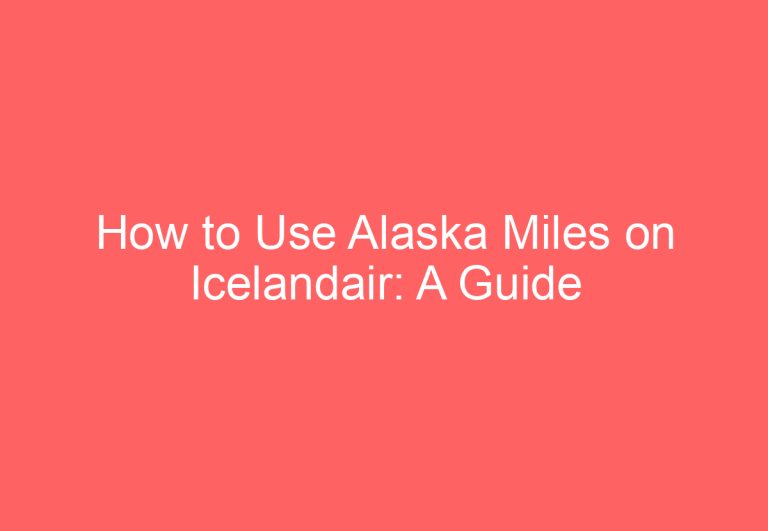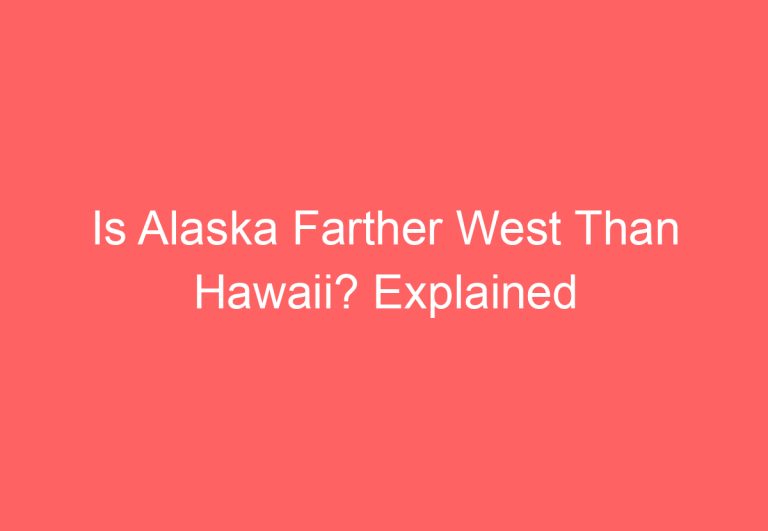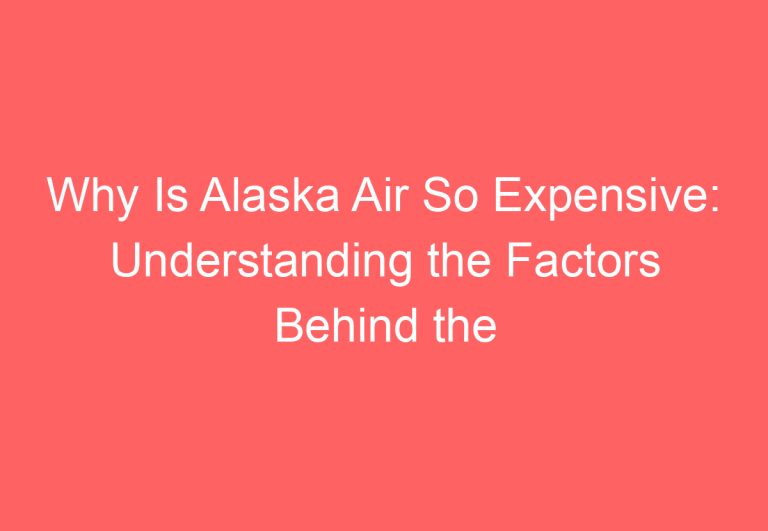Is Alaska an Exclave? Exploring Alaska’s Unique Geographic Situation
Alaska, the largest state in the United States, has a unique geographical location that has led to debates about whether it is an exclave or not. An exclave is a part of a country that is separated from the main part of that country by the territory of one or more other countries. The controversy surrounding Alaska’s status as an exclave arises from its location, which is separated from the contiguous United States by Canada.

Some argue that Alaska is a true exclave because it can only be accessed from the mainland United States by traveling through Canada or by air or sea transportation. Others argue that Alaska is not an exclave but a semi-exclave since it shares a border with Canada and is not completely surrounded by foreign territory. Despite the ongoing debate, Alaska’s status as an exclave or semi-exclave has significant implications for trade, transportation, and national security.
In this article, we will explore the arguments for and against Alaska’s status as an exclave, examine the historical and political context of its unique location, and discuss the practical implications of its status. By the end of this article, readers will have a comprehensive understanding of Alaska’s status as an exclave and its significance for the United States.
Geopolitical Context of Alaska

Alaska’s Status as an Exclave
Alaska, the largest state in the United States, is located in the far northwestern corner of North America. It is the only state in the US that is not contiguous with the rest of the country, making it an exclave. The state shares a maritime border with Russia to the west and is separated from the contiguous United States by Canada to the east.
Historical Overview and the Alaska Purchase
The history of Alaska is closely tied to the geopolitical context of the region. In 1867, the United States purchased Alaska from Russia for $7.2 million, a move that was initially met with skepticism and criticism. However, over the years, Alaska has proven to be a valuable asset to the United States, both economically and strategically.
Boundary Definitions and Neighboring Regions
Alaska shares a border with Canada’s Yukon Territory and British Columbia, and the two countries have a long history of cooperation and collaboration in the region. The boundary between the US and Canada was defined by the Alaska Boundary Treaty in 1903, which settled a long-standing dispute over the location of the border.
The region surrounding Alaska is of significant geopolitical importance due to its proximity to Russia and the Arctic. The Arctic is becoming increasingly accessible due to climate change, and many countries, including Russia, China, and the United States, are vying for influence in the region.
In conclusion, Alaska’s status as an exclave has played a significant role in shaping its history and geopolitical context. Its location has made it a valuable asset to the United States, both economically and strategically. The region surrounding Alaska is of significant geopolitical importance, and it will continue to be a focus of attention for many countries in the future.
Global Perspective on Enclaves and Exclaves

Understanding Enclaves and Exclaves
Enclaves and exclaves are geographical terms used to describe territories that are surrounded by a foreign territory or separated from their own territory by a foreign territory. An enclave is a territory that is completely surrounded by another country’s territory, while an exclave is a territory that is separated from its own country by a foreign territory.
Notable Worldwide Examples
Exclaves
One of the most notable examples of an exclave is Kaliningrad, a Russian territory that is surrounded by Poland and Lithuania. Another example is Point Roberts, a small town in Washington State that is separated from the rest of the United States by the Canadian border.
Enclave
A well-known example of an enclave is the Republic of San Marino, which is completely surrounded by Italy. Another example is the Vatican City, which is located within the city of Rome and is an independent city-state.
Pene-exclaves
Pene-exclaves are territories that are connected to their country by a narrow strip of land. An example of a pene-exclave is the Northwest Angle, a small piece of land in Minnesota that is connected to the rest of the United States by a thin strip of land that passes through Canada.
Baarle-Hertog/Baarle-Nassau
Baarle-Hertog/Baarle-Nassau is a complex of enclaves and exclaves that is located on the border between Belgium and the Netherlands. The border runs through the middle of the town, resulting in a patchwork of territories that belong to either Belgium or the Netherlands.
Campione d’Italia
Campione d’Italia is an Italian exclave that is located within Switzerland. The town is situated on the shores of Lake Lugano and is surrounded by Swiss territory.
Büsingen am Hochrhein
Büsingen am Hochrhein is a German exclave that is located within Switzerland. The town is situated on the banks of the Rhine River and is surrounded by Swiss territory.
In conclusion, enclaves and exclaves are fascinating geographical phenomena that have captured the attention of people around the world. While there are many notable examples of these territories, each one is unique and has its own story to tell.
Frequently Asked Questions

What defines an exclave?
An exclave is a territory that is geographically separated from the main part of its country by foreign territory. This means that to travel from the exclave to the mainland, one must cross over a foreign country or body of water.
What are some examples of exclaves around the world?
Some examples of exclaves around the world include Kaliningrad Oblast (Russia), Cabinda (Angola), and Campione d’Italia (Italy). Alaska is also considered an exclave of the United States.
How does the geographic status of Alaska compare to Hawaii?
While Alaska is an exclave of the United States, Hawaii is not. Hawaii is an archipelago located in the Pacific Ocean and is physically connected to the United States. Alaska, on the other hand, is separated from the contiguous United States by Canada and the high seas.
What is the population size of Alaska?
As of 2021, the estimated population of Alaska is approximately 731,545 people.
What is the capital city of Alaska?
The capital city of Alaska is Juneau.
Are there any other US territories that are considered exclaves?
No, Alaska is the only US territory that is considered an exclave. However, there are other territories that are geographically separated from the mainland United States, such as Hawaii and Puerto Rico, but they are not considered exclaves.






